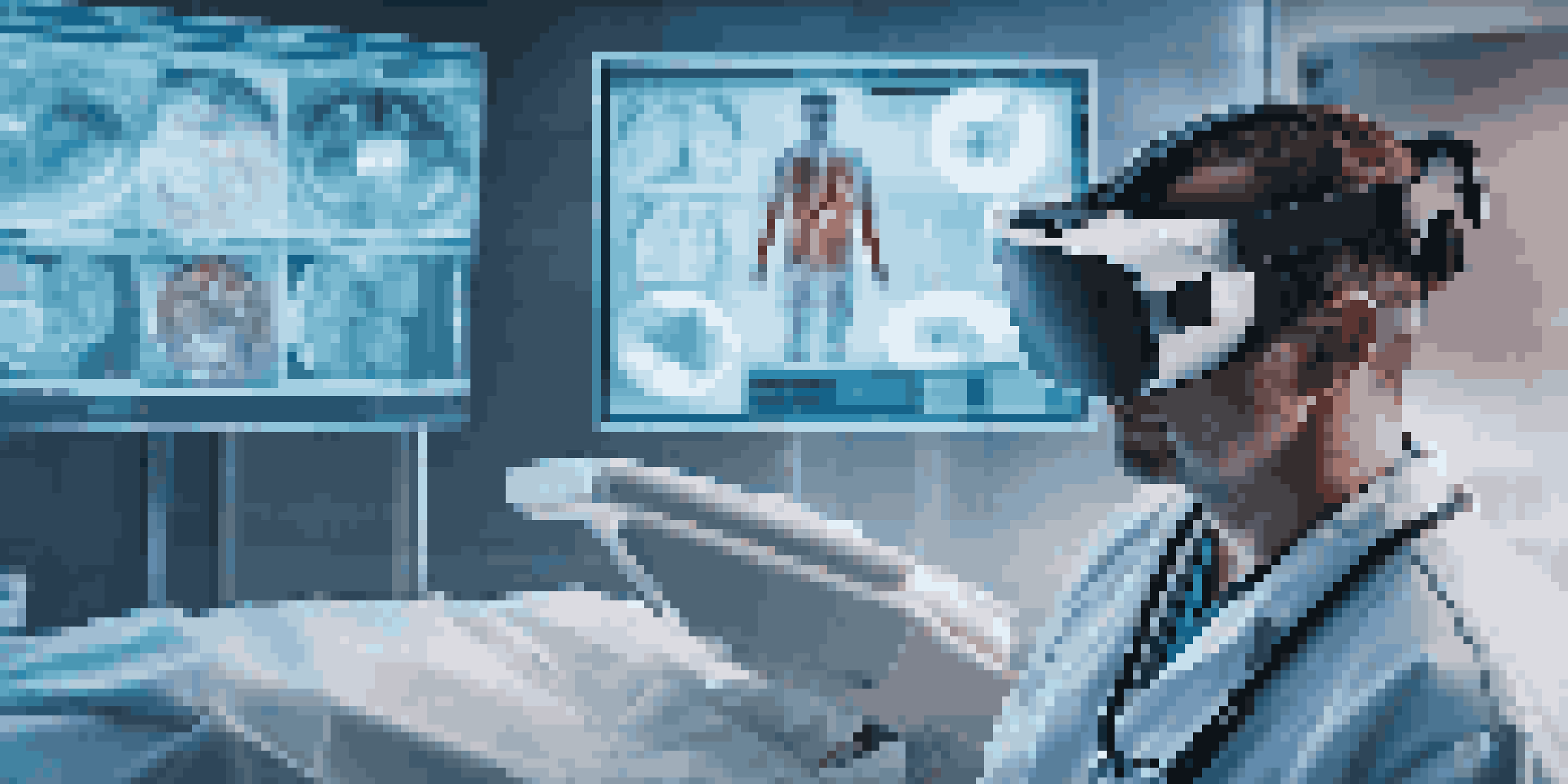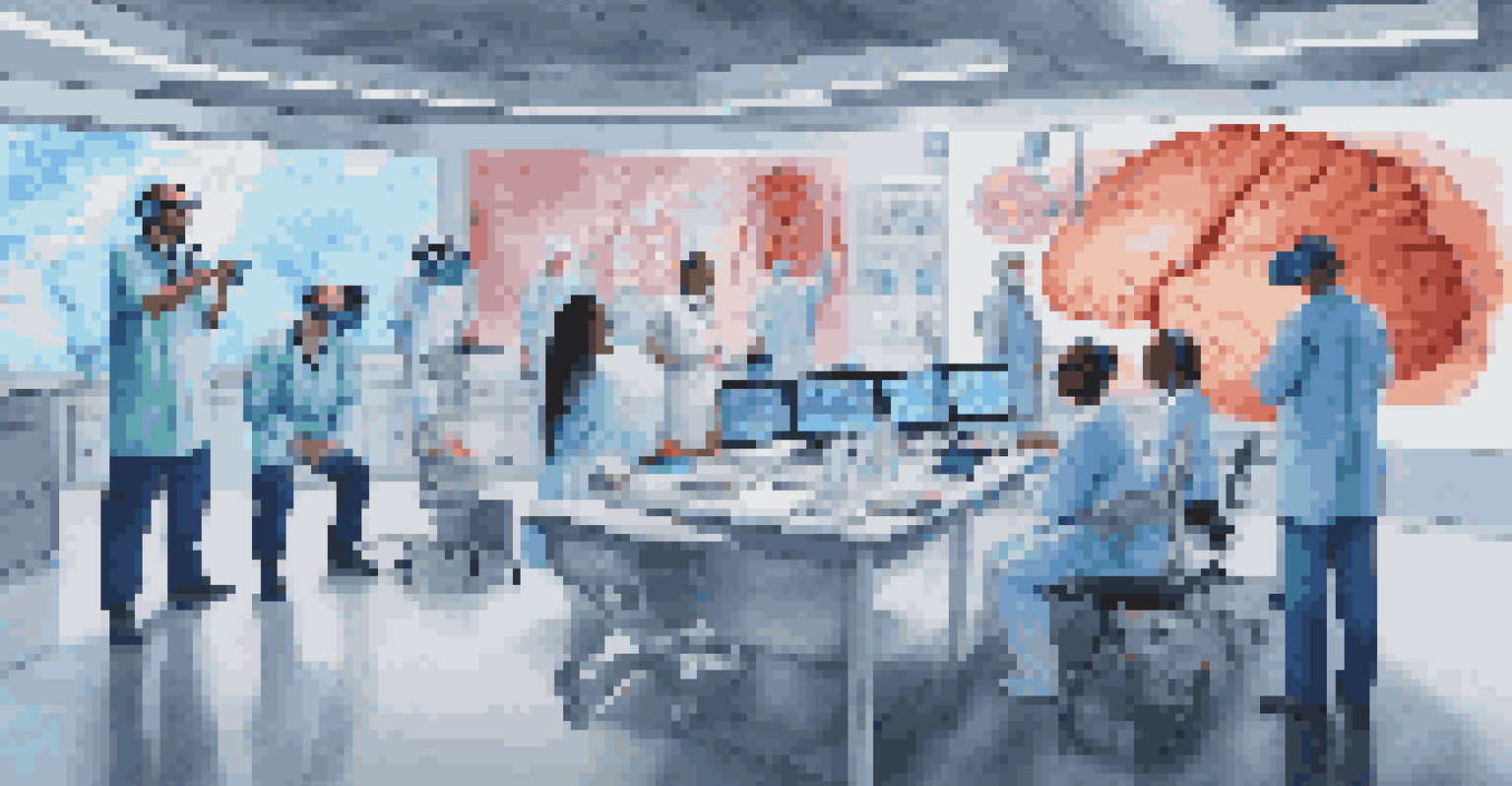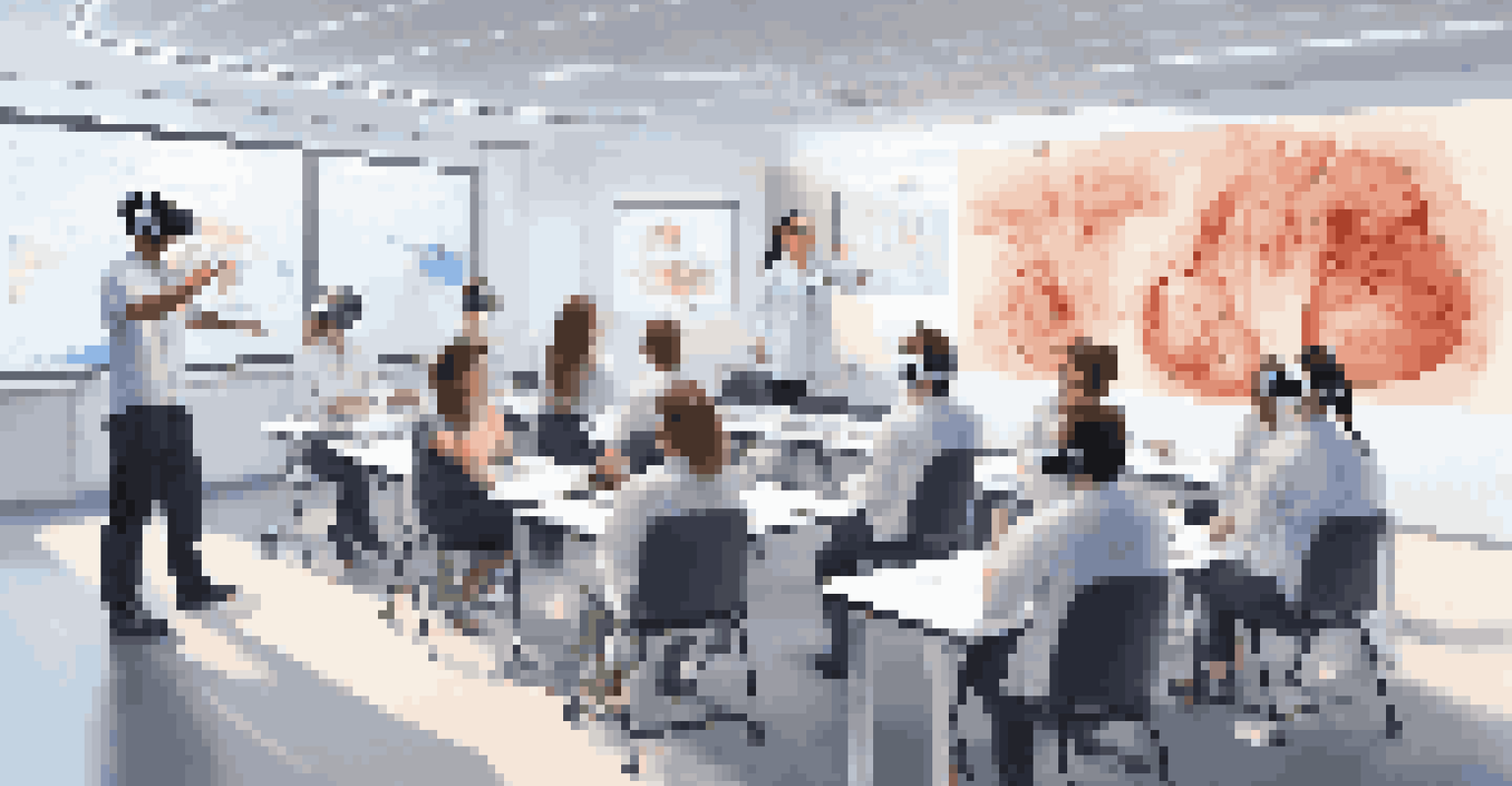The Role of VR in Training for Medical Emergency Preparedness

What is VR and Its Importance in Medical Training?
Virtual Reality (VR) is an immersive technology that creates a simulated environment, allowing users to interact in a 3D space. In medical training, VR provides a safe space for practitioners to hone their skills without risking patient safety. This innovative approach is particularly crucial for emergency preparedness, where every second counts.
The only thing worse than training your employees and having them leave is not training them and having them stay.
The significance of VR in this context lies in its ability to replicate high-pressure situations that medical professionals may face. By experiencing these scenarios virtually, trainees can develop critical decision-making skills and muscle memory. This hands-on practice ensures that when real emergencies arise, they are better equipped to respond effectively.
Moreover, VR training can be tailored to specific situations, making it adaptable for different medical fields. Whether it’s simulating a cardiac arrest or a natural disaster response, this technology offers diverse training modules that enhance preparedness and confidence among healthcare providers.
Enhanced Patient Outcomes Through VR Training
One of the primary benefits of VR in medical emergency training is its potential to improve patient outcomes. When healthcare professionals undergo rigorous VR simulations, they are better prepared to handle real-life emergencies. This preparedness translates into quicker response times and more effective patient care during critical incidents.

Research has shown that medical staff who train with VR demonstrate higher retention of knowledge and skills compared to traditional training methods. This improvement is crucial in emergencies, where decisions must be made swiftly and accurately. With VR, healthcare providers can practice procedures repeatedly until they achieve a level of proficiency that instills confidence.
VR Enhances Medical Training
Virtual Reality provides a safe and immersive environment for healthcare professionals to practice critical skills without risking patient safety.
Additionally, VR training allows for collaborative scenarios where multiple team members can interact. This teamwork fosters communication skills, which are essential in emergency situations. When medical teams work seamlessly together, it not only boosts their efficiency but also enhances the overall quality of care delivered to patients.
Cost-Effectiveness of VR in Medical Training
Implementing VR training can be a cost-effective solution for medical institutions. Although the initial investment in VR technology may seem high, the long-term savings are significant. By reducing the need for physical materials and facilities for training, healthcare organizations can allocate their resources more efficiently.
In an emergency, every second counts. Training prepares us to act decisively and effectively.
Moreover, VR minimizes the risks associated with traditional training methods that may involve live simulations or using real patients. This not only reduces liability costs but also protects patients from unnecessary risks during training. By investing in VR, hospitals can ensure they provide the best training without compromising patient safety.
The adaptability of VR training programs also contributes to their cost-effectiveness. Institutions can easily update scenarios and training modules without the need for expensive equipment changes. This flexibility allows medical providers to keep their training relevant and aligned with the latest emergency protocols.
Real-World Applications of VR in Emergency Preparedness
Many healthcare institutions have already begun to integrate VR training into their emergency preparedness programs. For instance, hospitals use VR simulations to prepare staff for a variety of emergency situations, including mass casualty incidents and infectious disease outbreaks. This hands-on experience equips medical professionals with the skills they need to act confidently in real crises.
Additionally, VR is being utilized to train paramedics and emergency responders in the field. These professionals can practice complex procedures in realistic scenarios, ensuring they are ready to handle emergencies as they arise. The immersive nature of VR helps them to visualize and execute their tasks more effectively.
Improved Patient Outcomes
VR training leads to better preparedness among medical staff, resulting in quicker response times and higher quality patient care during emergencies.
Furthermore, institutions are leveraging VR to educate communities on emergency response. Public health campaigns using VR can simulate disaster situations, helping the general public understand how to respond during emergencies. This not only prepares individuals but also fosters a culture of preparedness within communities.
Challenges and Limitations of VR in Medical Training
While VR presents numerous advantages, it is not without its challenges. One of the primary concerns is the accessibility of technology; not all medical institutions have the budget or resources to implement VR training. This disparity can create gaps in training quality among healthcare providers, particularly in underserved areas.
Additionally, the effectiveness of VR training can be influenced by the quality of the technology used. Subpar simulations may hinder the learning experience rather than enhance it. Thus, it's crucial for institutions to invest in high-quality VR programs that accurately reflect real-life scenarios.
Lastly, some medical professionals may be resistant to adopting new technologies. Overcoming this skepticism requires a cultural shift within healthcare organizations, emphasizing the benefits of VR training. By demonstrating its effectiveness through data and positive outcomes, institutions can encourage broader acceptance among staff.
The Future of VR in Medical Emergency Training
The future of VR in medical emergency training looks promising as technology continues to evolve. With advancements in VR hardware and software, training simulations will become even more realistic and engaging. This evolution will likely enhance the learning experience and improve skill retention among medical professionals.
Moreover, as VR becomes more accessible, we may see a wider adoption of this technology across various healthcare settings. This shift will enable more institutions to provide their staff with high-quality training, ultimately leading to better emergency preparedness on a larger scale.
Cost-Effective Training Solution
Although initial investments in VR technology can be high, the long-term savings and efficiency in training make it a cost-effective choice for medical institutions.
In addition to medical settings, VR could also play a role in public health education. By expanding its use to community programs, individuals can learn how to respond to emergencies effectively. This holistic approach could create a more resilient society, where both healthcare providers and the public are prepared for unexpected situations.
Conclusion: Embracing VR for a Safer Future
In conclusion, the integration of VR technology into medical emergency training offers a transformative approach to preparedness. By providing immersive, realistic training experiences, VR helps healthcare professionals develop the skills they need to respond effectively during crises. This, in turn, enhances patient care and safety.
As we look towards the future, it's essential for healthcare institutions to embrace this innovative technology. By investing in VR training programs, they can ensure that their staff is well-equipped to handle emergencies with confidence. The potential benefits extend beyond the walls of hospitals, impacting communities and shaping a culture of preparedness.

Ultimately, as VR continues to advance, its role in medical training will only grow. The journey towards a safer future in healthcare is just beginning, and VR is poised to play a pivotal role in that transformation.